
If you position yourself next to the Fuente de los Caballos (Fountain of the Horses) in Santiago de Compostela (Spain) and rotate a full 360 degrees, you’ll see the southern façade of Santiago Cathedral, the stairs leading up to the Quintana, the Casa del Cabildo (Guildhall House) and the Casa del Deán (Dean’s House). In this square, named after the Silversmiths’ (Platerías) workshops that occupied it in the Middle Ages, it’s as though every element of a puzzle fits together in perfect harmony.
The trick of the eye could only be discerned by an expert (or someone equally well-informed): the façade of the Casa del Cabildo is just that. A façade. Built in the latter half of the eighteenth century for purely ornamental purposes, the house is in fact barely three meters deep. It is nothing more than a backdrop; a Baroque design intended to decorate the Plaza de Platerías.
The history of art and architecture is littered with examples of tricks intended to alter our perception and make us see things that really don’t exist. Trompe l’oeils are another fine example, harnessing the powers of perspective to create an illusion.
The history behind trompe l’oeils
The French term ‘trompe l’oeil’ is art-world jargon, and literally translates as ‘a trick of the eye’. This illusionary art form involves creating a sense of volume and depth on what is in fact a flat surface, achieved through nothing more than paint. We may think of optical illusions as a fairly modern concept, but this play on perspectives to trick the eye date back thousands of years.
One of the first references to a trompe l’oeil dates back to the fifth century BC and was written about by Pliny the Elder some 400 years later. As legend has it, two Greek painters—Zeuxis and Parrhasius—had both reached dizzying heights of fame and wanted to decide which of the two were more talented. Only a contest would settle the matter: the winner would be he who could paint the most realistic mural.
Zeuxis impressed Parrhasius with a painting of grapes so realistic that birds came to peck away at the ‘fruit’. Convinced of his victory, Zeuxis asked his opponent to open the curtain to reveal his work. At that point, Parrhasius declared himself victorious. The curtain was not in fact real: it was nothing more than a painting on the wall. He claimed that while the grapes confused the birds, his curtain had successfully deceived Zeuxis himself.
Like Parrhasius’ curtain, trompe l’oeils proliferated during the Classical period, above all in Pompeian-style murals. This idea of tricking the eye through volume and perspective made a comeback in the Renaissance and Baroque periods, a time when painting techniques were perfected.
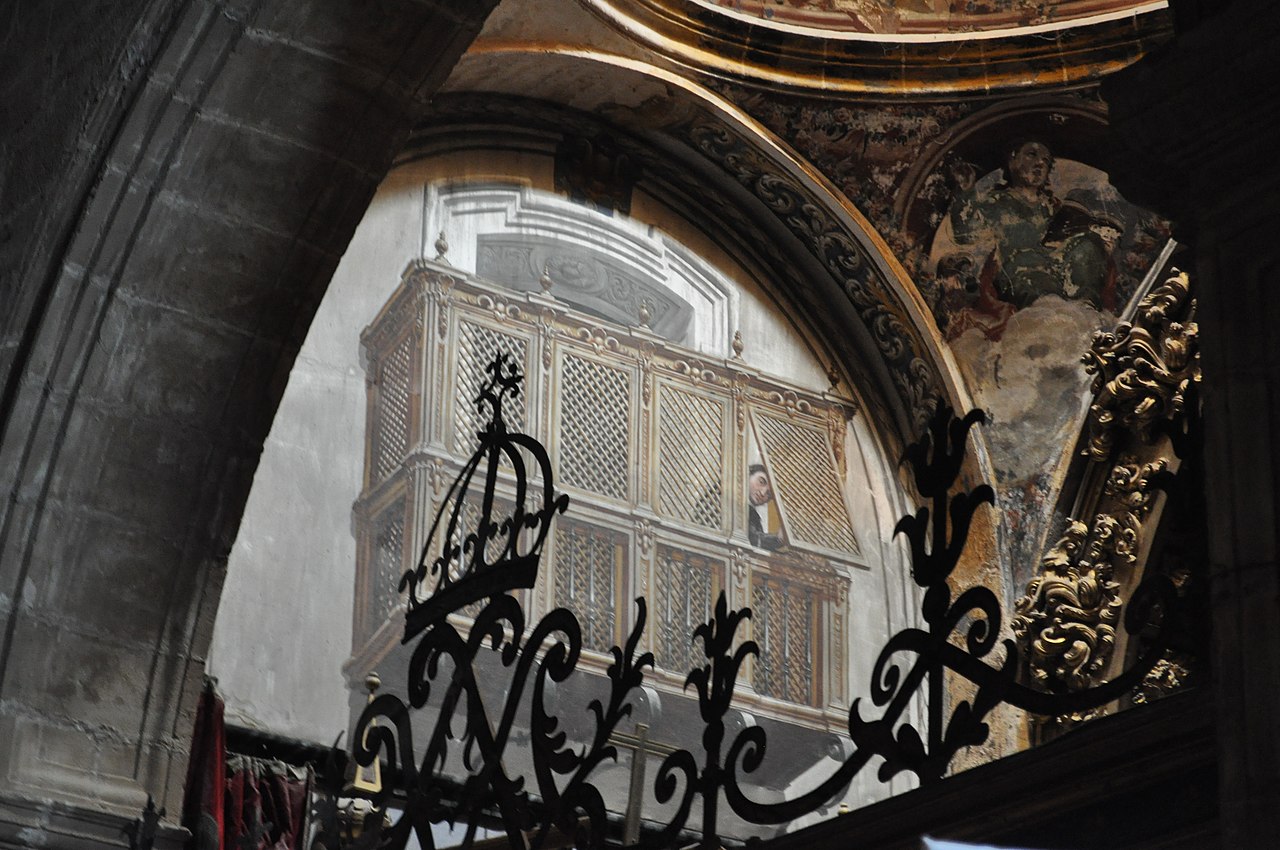
Trompe l’oeil at Calahorra Cathedral simulating a monk opening a shutter. Gato.Cuantico (Wikimedia Commons)
Throughout history, trompe l’oeils have been used to simulate columns, windows, moldings, cornices, vegetation and even people—indoors and out. On some occasions, the elements are used to give balance to compositions, while in others, they simply serve to deceive, decorate, or create complicity between the artist and observers of their work.
Ver esta publicación en Instagram
From Rome churches to Banksy paintings
One of the most emblematic churches of the Roman Baroque era also gives us a fine example of how a painting can alter our vision of architecture. The church of San Ignacio de Loyola features a dome that does not actually exist.
The painter and architect Andrea Pozzo painted a 17-meter wide canvas in perspective to give a sense of depth to his work. The deception only becomes clear when you view the artwork from the side of the church, at which point the dome reveals itself to be a completely flat surface.
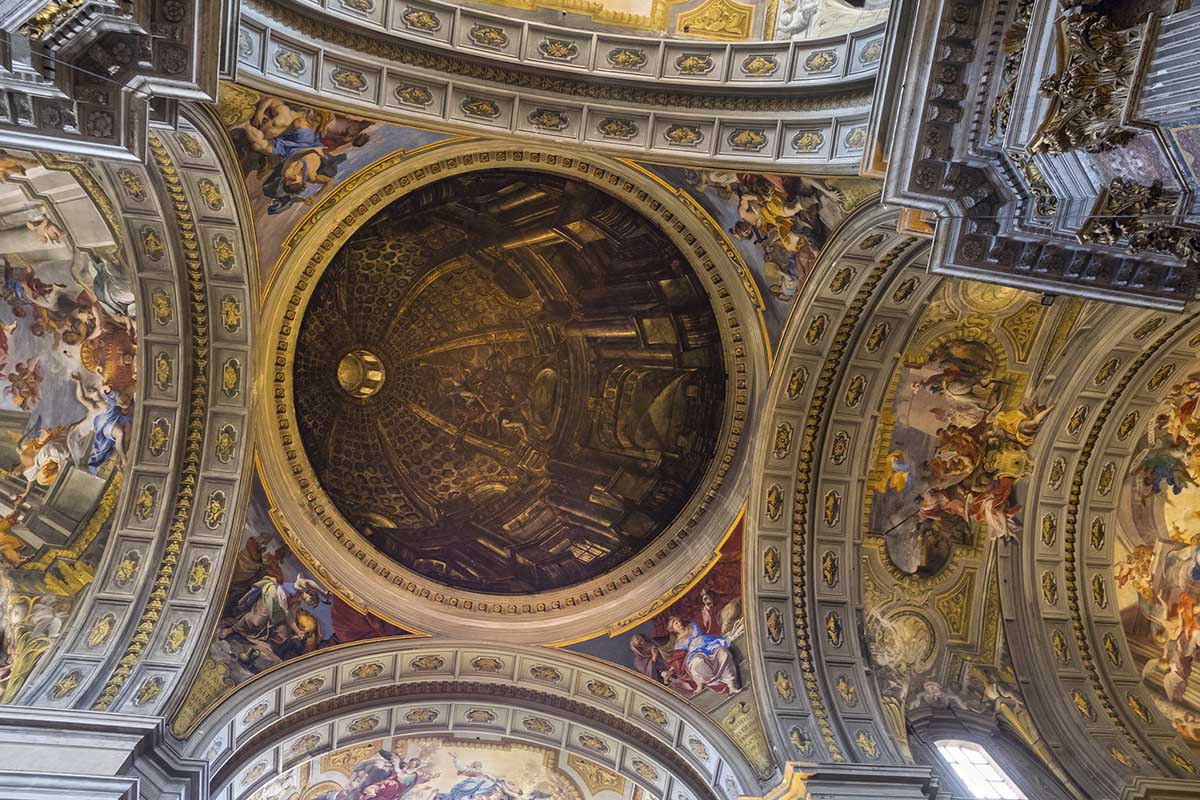
False dome of San Ignacio de Loyola. Carmelo Peciña (Flickr).
Numerous palaces, churches and other historic buildings feature trompe-l’oeil and other pictorial pranks. And they can also be found in a number of houses and buildings in towns and cities. Examples include the works of Extremaduran painter Alberto Pirrongelli on the streets of Madrid and works by French artist Patrick Commecy.
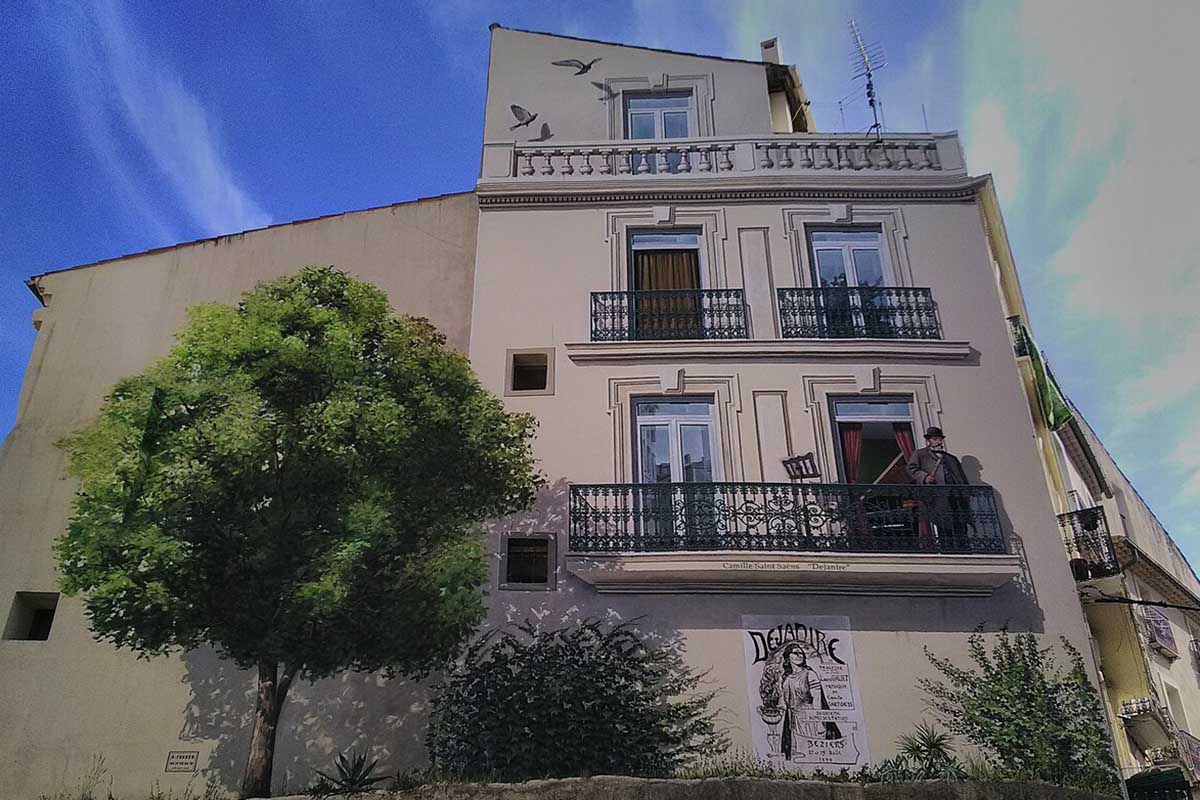
Patrick Commecy’s trompe-l’oeil in Bèziers, France. Neohamsa (Wikimedia Commons).
The trompe l’oeil technique of the past lives on in the present, in the form of large decorative murals that use perspective to blend reality with art. In the village of Romangordo, Cáceres (Spain) the paintings evoke imagery of a fading lifestyle that still lives on in the memory of many of its residents.
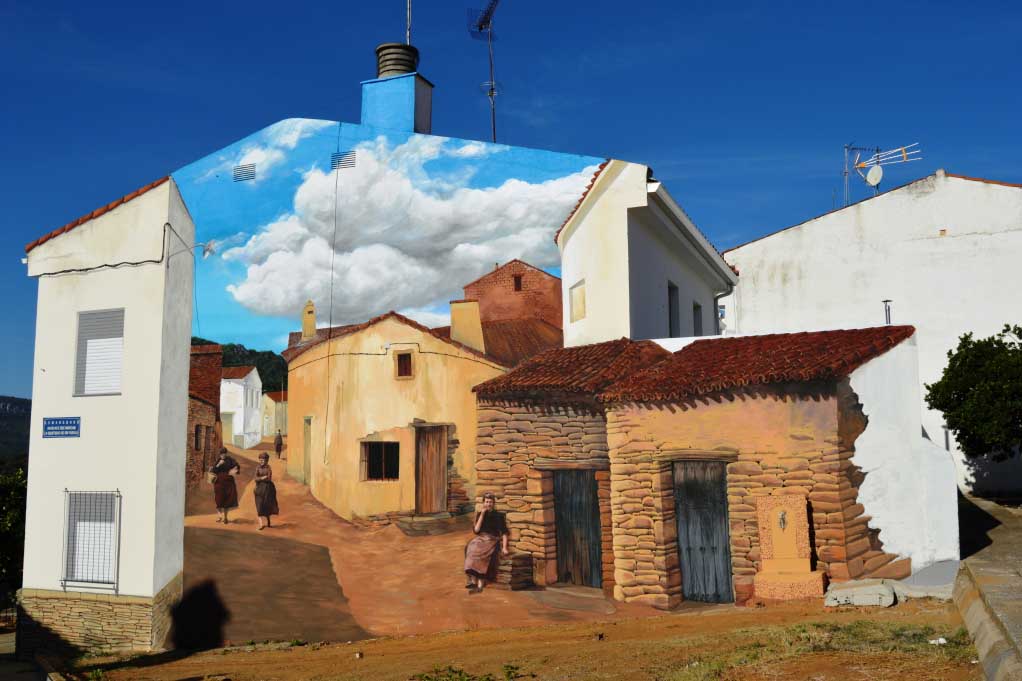
Mural in Romangordo. Romangordo Town Hall.
Aside from murals, these illusionary artworks are also still widely used in paintings, especially portraits and still lifes. And they’re no less impressive today. In 2006, a Banksy painting appeared on a wall on Chalk Farm Road in North London. Sweep It Under the Carpet isn’t just a trick on the eye; it’s a social criticism of poverty and inequality. The painting was left there for some months but was eventually painted over.
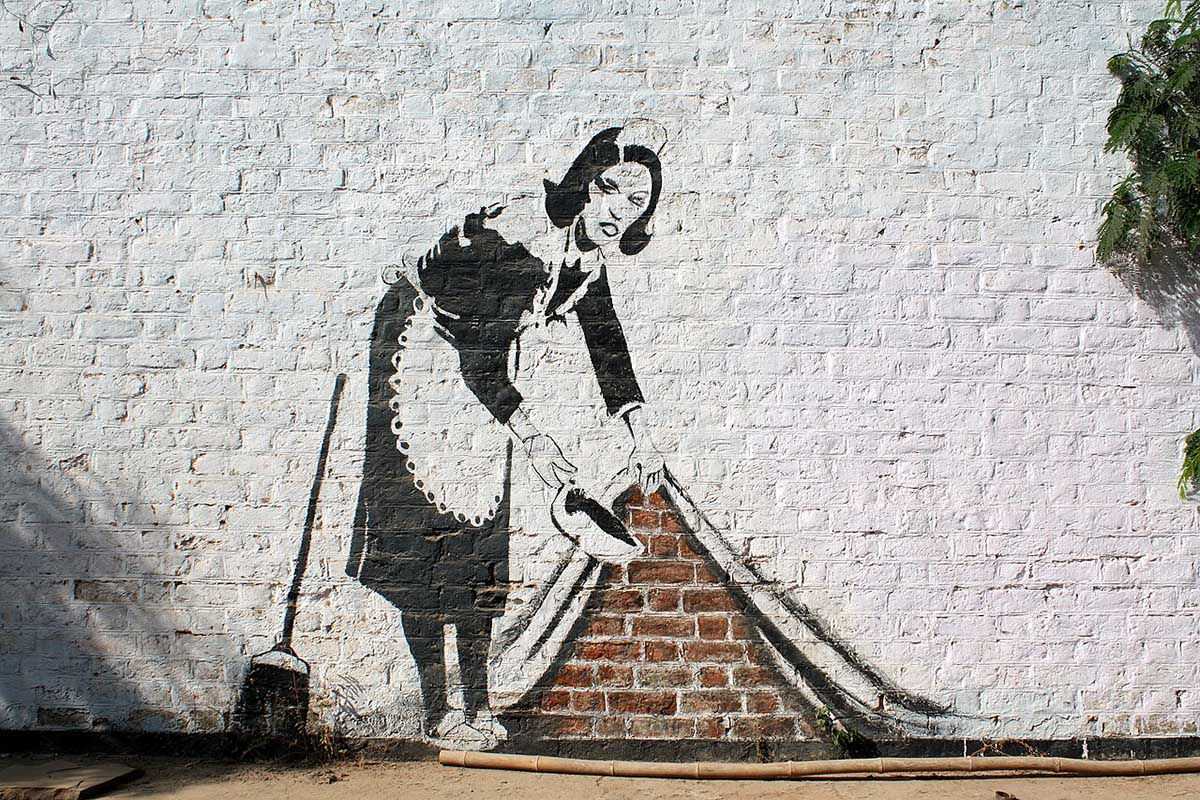
Banksy paintings in London. Vaishal Dalal (Wikimedia Commons).
In reality, you don’t need to go far to find these little tricks: they’re everywhere. They grace buildings that are no more than façades, graffiti, films and shorts, architectural elements and even plates of food that aren’t what they seem at first sight. But you’ll only find them if you look closely.





There are no comments yet